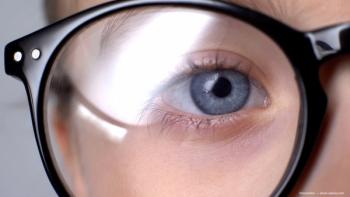
- Ophthalmology Times: June 2023
- Volume 48
- Issue 6
Physicians put corticosteroids under microscope
Experts weigh pros and cons of treatment option for orbital cellulitis in pediatric patients
Reviewed by Michel Belliveau, MD, FRCSC; and Peter Gill, MD, DPhil, MSc, FRCPC
There are arguments for and against more liberal use of corticosteroids in children hospitalized with orbital cellulitis, according to clinicians debating the role of corticosteroids in the management of the rare disease at the 33rd annual Jack Crawford Day Conference, an annual pediatric ophthalmology update organized by the University of Toronto Department of Ophthalmology & Vision Sciences.
The case for use of corticosteroids
Speaking at the conference, Michel Belliveau, MD, FRCSC, an assistant professor at the University of Ottawa and a surgeon at The Ottawa Hospital and Children’s Hospital of Eastern Ontario in Ottawa, Ontario, Canada, noted that despite limited literature, corticosteroids are increasingly used in the management of orbital cellulitis in children.
“As these children start to get IV [intravenous] antibiotics for their sinusitis and orbital cellulitis, the swelling may actually get worse,” said Belliveau, past president of the Canadian Society of Oculoplastic Surgeons. “There’s lysis of bacteria, exposure of cell wall components, and increased inflammatory mediators.”
One of the significant studies that compared the impact of steroids vs no steroids in the management of orbital cellulitis was conducted at Children’s Hospital Colorado. The authors concluded that oral prednisone, administered at 1 mg/kg after C reactive protein was below 4 mg/dl and continued 7 days, resulted in a shorter hospital stay.1
“What they showed was a shorter admission in the group that received steroids vs those who did not and also just a shorter admission after receiving the steroids,” Belliveau said.
Another study used intravenous dexamethasone with antibiotics on admission in children aged 5 to 17 years who had orbital cellulitis. Investigators found shorter hospital stays in those who were administered dexamethasone compared with those who were not.2
“The limited literature is what it is,” Belliveau explained. “But the collective clinical experience is that it works. That is why it is being used more and more. Children feel better, the clinical signs resolve more rapidly, and we can steer discussion away from surgery much more quickly.”
Belliveau also added, “inaccurate diagnosis of orbital cellulitis is common and this severely limits the value of hospital administrative data for research purposes.”
Although clinicians who are not proponents of steroid initiation in children who present with orbital cellulitis suggest that more data, particularly from randomized, clinical trials (RCTs), should be generated to make the case for steroid initiation, Belliveau pointed out that there are challenges with mounting RCTs to answer the question about steroid efficacy.
“These children are often seen on an emergency basis, on nights and weekends, and you’re going to need that research staff available to make sure the enrollment and all the protocols are followed cleanly,” Belliveau said.
The case against
Arguing for randomized trials to look at the therapeutic benefit of steroids more definitively in the management of orbital cellulitis, Peter Gill, MD, DPhil, MSc, FRCPC, a general pediatrician at the Hospital for Sick Children, associate scientist at the SickKids Research Institute in Toronto, assistant professor in the Department of Pediatrics at the University of Toronto, Ontario, Canada, and a senior associate at the Centre for Evidence-Based Medicine at the University of Oxford, Oxford, England, acknowledged that some studies have suggested steroids decrease swelling, a common symptom of orbital cellulitis.
While systemic steroids may improve outcomes in severe orbital infections and reduce inflammation and edema, they may impact the ability of the body to fight infection, Gill noted. Moreover, high-quality evidence to support their use is lacking, he maintained.
“We know that there is widespread variation in practice in the United States, but limited information in Canada,” Gill said.
Studies have been limited by sample size and scope and have been single-center and observational. In addition, studies have not examined the timing of steroid therapy with surgery.
Gill pointed out that to date, there is only 1 published randomized trial, which has been described as having a high risk of bias.
Gill and coinvestigators looked at the association between early systemic corticosteroids and outcomes in a large cohort of hospitalized children in a study published last year.3 That study involved 5832 patients hospitalized with orbital cellulitis, of whom 330 (5.7%) were in the corticosteroid group and 5502 (94.3%) were in the noncorticosteroid group, Gill explained.
Rates of surgical intervention were similar between the 2 study arms. There was no difference in emergency department visits.
Although steroids have a role in management, Gill cautioned against their routine use and recommended that there be better evidence before any recommendation is issued about regular use of corticosteroids in hospitalized children with orbital cellulitis.
Michel Belliveau, MD, FRCSC
P: 613-737-1000
Belliveau has no relevant disclosures related to the content of this article.
Peter Gill, MD, DPhil, MSc, FRCPC
P: 416-813-7654
Gill has no relevant disclosures related to the content of this article.
References:
Davies BW, Smith JM, Hink EM, Durairaj VD. C-reactive protein as a marker for initiating steroid treatment in children with orbital cellulitis. Ophthalmic Plast Reconstr Surg. 2015;31(5):364-368. doi:10.1097/IOP.0000000000000349
Chen L, Silverman N, Wu A, Shinder R. Intravenous steroids with antibiotics on admission for children with orbital cellulitis. Ophthalmic Plast Reconstr Surg. 2018;34(3):205-208. doi:10.1097/IOP.0000000000000910
Dworsky ZD, Lee B, Ramchandar N, Rungvivatjarus T, Coufal NG, Bradley JS. Impact of cell-free next-generation sequencing on management of pediatric complicated pneumonia. Hosp Pediatr. 2022;12(4):377-384. doi:10.1542/hpeds.2021-006361
Articles in this issue
over 2 years ago
Cutting-edge advances in corneal treatmentover 2 years ago
Imaging trends in pediatric uveitisover 2 years ago
New horizons in interventional glaucomaover 2 years ago
Editorial: A new chapter opensover 2 years ago
Clinic is streamlining genetic testing and diagnoses of patientsover 2 years ago
Optimizing the implementation of ISBCSover 2 years ago
Cosmetic surgery of the cornea: A new type of surgeryNewsletter
Don’t miss out—get Ophthalmology Times updates on the latest clinical advancements and expert interviews, straight to your inbox.



















































.png)


